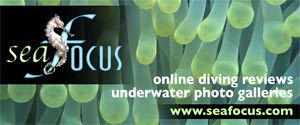
Pineconefishes
Contributed by Steve Griffin
 These
non-aggressive fish are named for there pinecone or pineapple like appearance.
They are nocturnal feeders and can usually be found alone or in a pair under
ledges or inside caves during the day.
These
non-aggressive fish are named for there pinecone or pineapple like appearance.
They are nocturnal feeders and can usually be found alone or in a pair under
ledges or inside caves during the day.
To assist in attracting the small shrimp which are their usual diet, pinecone fishes have light organs located on both sides just below the lower jaw. These light organs activate symbiotic phosphorescent bacteria which create a greenish glow in the dark. As the fish age the colour of the light is reported to change to red.

 Two
species of Pineconefish are found in Australia.
Two
species of Pineconefish are found in Australia.
The Japanese Pineconefish (Monocentris japonicus) is yellow in colour with black scale margins. It grows to around 17 cm and its scales form a bony carapace. Its light organs are small and rectangular in shape. They are generally found in 15 - 200m. They have been found in numerous locations around the world including the Red Sea, South Africa, Mauritius, Sri Lanka to Australia, Japan to North New Zealand.
 The
Pineapplefish (Cleidopus gloriamaris) is named for its pineapple-like
appearance. This species has been reported only in the east and west coasts
of Australia with no reports from Victoria, Tasmania or South Australia. It
is yellowish in colour with dark scale margins and grows to around 25cm in length.
Its light organs are some what larger than those of M. japonicus and
are more ovular in shape. They are found in rocky and coral reefs in 5 - 50
m. The Pineapplefish is also known as the Knightfish.
The
Pineapplefish (Cleidopus gloriamaris) is named for its pineapple-like
appearance. This species has been reported only in the east and west coasts
of Australia with no reports from Victoria, Tasmania or South Australia. It
is yellowish in colour with dark scale margins and grows to around 25cm in length.
Its light organs are some what larger than those of M. japonicus and
are more ovular in shape. They are found in rocky and coral reefs in 5 - 50
m. The Pineapplefish is also known as the Knightfish.
In the Directory

 Ikelite Australia - Underwater Photographics
Ikelite Australia - Underwater Photographics
Underwater Australasia is official dealer for all Ikelite products since 1999 and we can help you with all your Ikelite video and digital camera housings needs as well as accessories such as strobe packages, ports and more. Sales to Australia only.
 Seabob Sales
Seabob Sales
Official dealer of SEABOB Luxury Seatoys by CAYAGO. Addictive fun on and underwater. Dive in and discover. Made in Germany.








